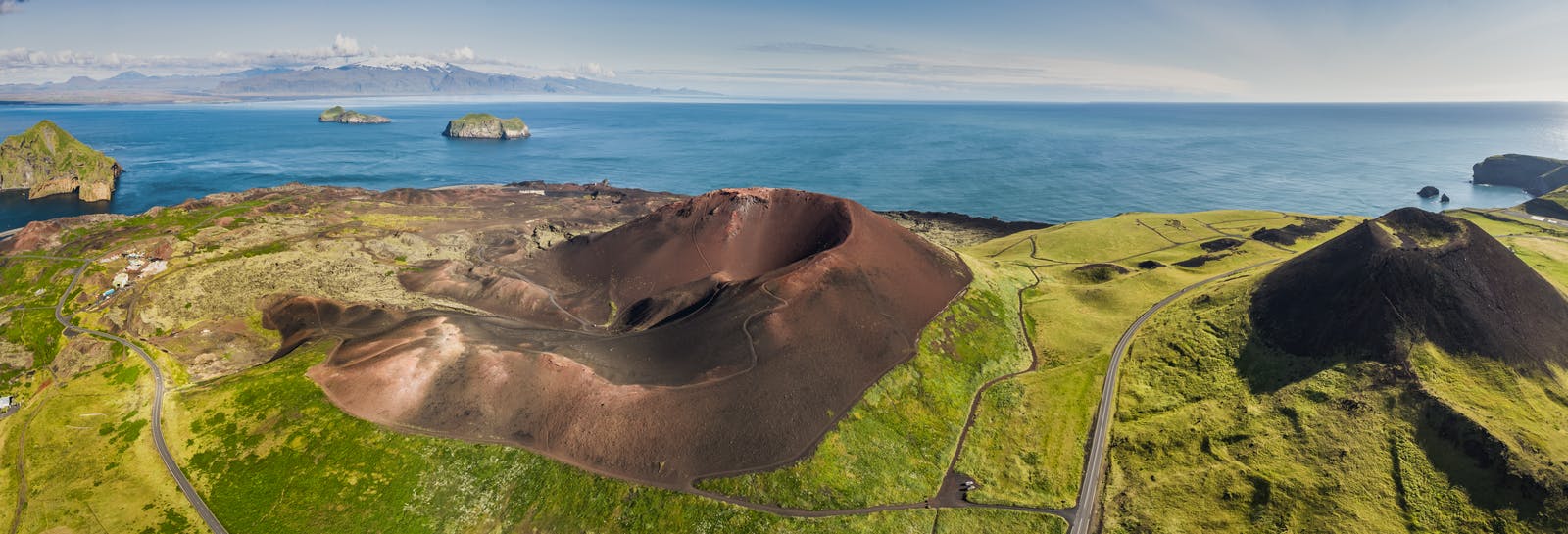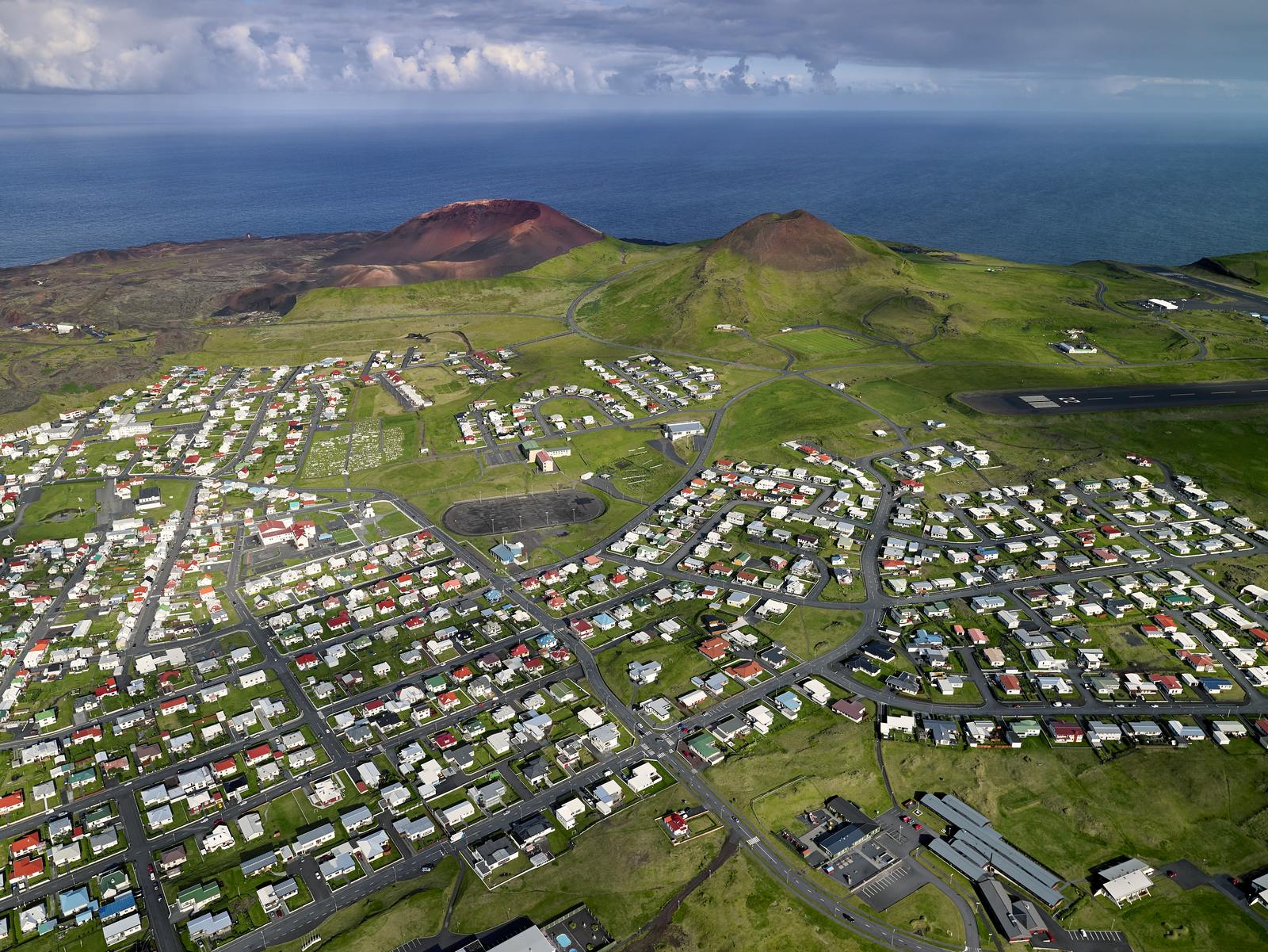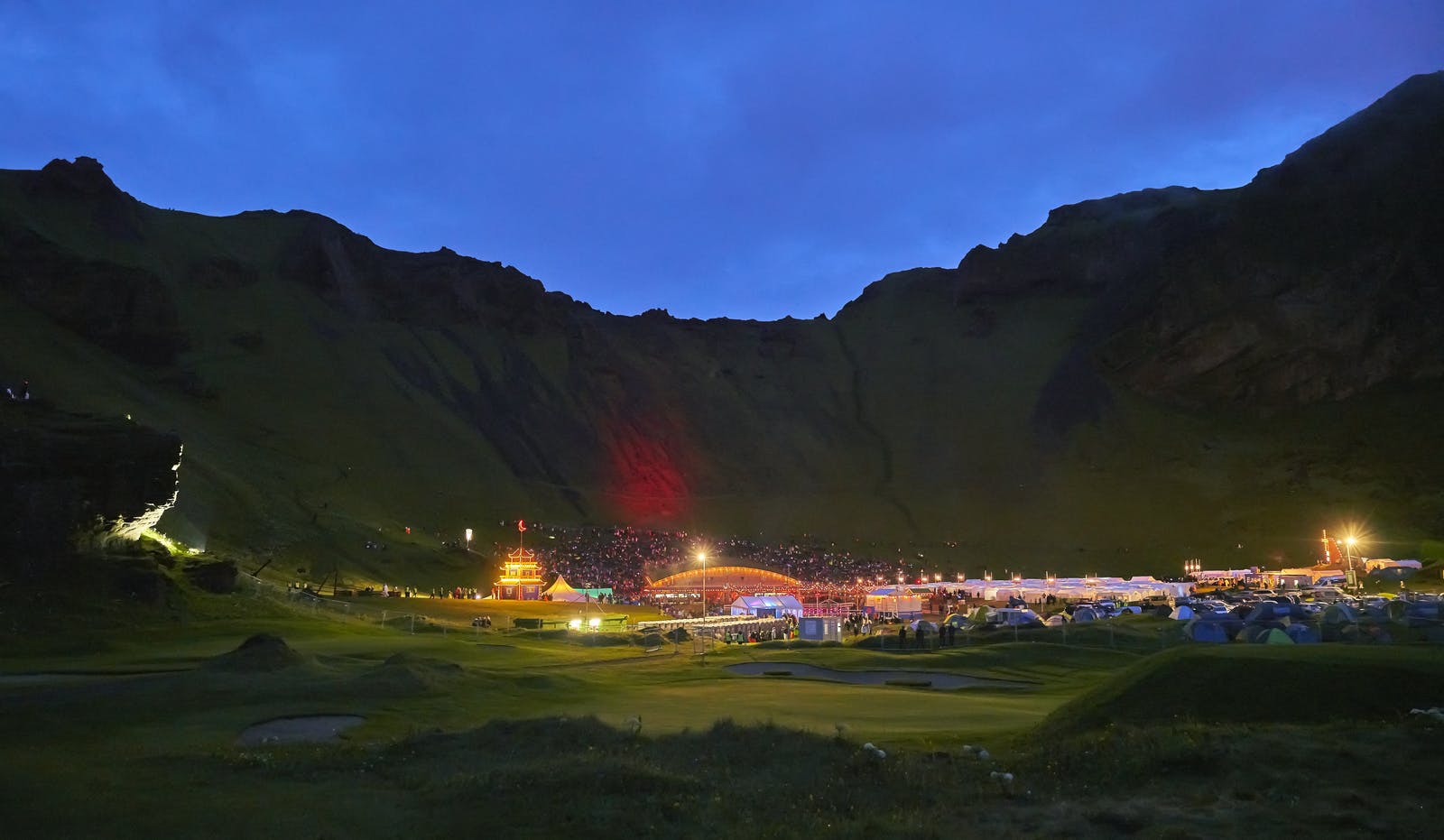
Your Guide to Heimaey Island
Heimaey and the Westman Islands
Heimaey Island, the largest and only inhabited island in the Westman Islands archipelago, rises dramatically from the frigid waters of the North Atlantic Ocean off the southern coast of Iceland. Its name translates to "Home Island," a fitting moniker for this rugged and resilient landmass that has been shaped by both natural forces and human endeavour. With a rich history, diverse wildlife, and stunning landscapes, Heimaey captivates visitors with its beauty and intrigue.
"Heimaey" is pronounced as "HAY-may-ay." The emphasis is on the first syllable, "HAY," with the "ay" sound being similar to the "ay" in the word "say." The "m" is pronounced softly, and the "ey" at the end is pronounced like the "ay" in "say." Overall, it's pronounced as "HAY-may-ay."

Geographical and Geological Overview
Heimaey is located approximately 7.4 kilometres (4.6 miles) off the southern coast of Iceland and covers an area of approximately 13.4 square kilometres (5.2 square miles). The island is characterised by its volcanic origins, with its rugged terrain shaped by eruptions from Helgafell and Eldfell volcanos and other geological activity over millennia. Despite its volcanic history, Heimaey boasts fertile soil and lush vegetation, providing a habitat for a variety of plant and animal species.
Eldfell Volcano
Eldfell, meaning "Hill of Fire," is a volcanic cone located on Heimaey Island. This iconic landmark was born from a dramatic eruption that began on January 23, 1973 and lasted for several months. The eruption reshaped the island's landscape, burying homes and buildings beneath layers of lava and ash and forcing the evacuation of the island's inhabitants.
Today, volcano serves as a powerful reminder of the forces of nature and the resilience of the human spirit. Visitors to Heimaey can hike to the summit of Eldfell and witness firsthand the stark beauty of the volcanic terrain. From its rocky slopes, panoramic views of the surrounding landscape and coastline unfold, offering a glimpse into the island's tumultuous past and promising vistas of hope and renewal for the future. Eldfell stands as a testament to the enduring bond between Iceland's people and the land they call home. You can learn more about Eldfell here.

Eldfell Eruption in 1973
The 1973 eruption of Eldfell, a volcanic cone on Heimaey Island, stands as one of the most significant events in Icelandic history. The eruption began unexpectedly on January 23, 1973, with a series of fissures opening on the island's eastern side. Lava fountains and ash plumes soared into the sky, blanketing the island in darkness and chaos.
The eruption threatened the town of Vestmannaeyjar with more than 5000 inhabitants. Fearing for their lives, residents evacuated the island, leaving behind their homes and belongings. As lava flowed towards the town, desperate efforts were made to divert its path using seawater and bulldozers.
In the months that followed, the eruption reshaped Heimaey's landscape, creating the iconic Eldfell volcano and forever altering the island's coastline. Today, the 1973 eruption serves as a testament to the power of nature and the resilience of the people of the Westman Islands.
History and Settlement
Evidence of human habitation on Heimaey dates back over a thousand years, with archaeological findings indicating Norse settlement in the area during the Viking Age. The island's sheltered harbours and abundant natural resources made it an attractive location for early settlers, who established thriving fishing communities along its shores.
Wildlife and Natural Beauty
Heimaey is home to a diverse array of wildlife, both on land and in the surrounding waters. Seabird colonies, including puffins, guillemots, and razorbills, nest along the island's cliffs, creating a spectacular sight for birdwatchers and nature enthusiasts. The island's coastal waters teem with life, with seals, dolphins, and whales often spotted offshore.
In addition to its wildlife, Heimaey boasts stunning natural landscapes that attract visitors from around the world. From the rugged coastline and black sand beaches to the verdant hillsides and panoramic viewpoints, Heimaey offers endless opportunities for exploration and adventure.

Cultural Attractions and Landmarks
Heimaey is home to several cultural attractions and landmarks that highlight the island's rich heritage and history. The Eldheimar Museum, located at the site of the 1973 volcanic eruption, offers insight into the impact of the eruption on the island's inhabitants and showcases artefacts recovered from the lava flow.
Other notable landmarks on Heimaey include Stórhöfði, the southernmost point of the island, which offers panoramic views of the surrounding seascape, and Herjólfsdalur Valley, known for its picturesque landscapes and hiking trails.
Tourism and Recreation
Tourism plays an important role in Heimaey's economy, with visitors drawn to the island's natural beauty, cultural attractions, and outdoor recreational opportunities. Activities such as hiking, birdwatching, and boat tours are popular among tourists, allowing them to explore Heimaey's landscapes and wildlife up close.
Accommodation options range from cosy guesthouses and bed-and-breakfasts to modern hotels, providing visitors with a comfortable base from which to explore the island. Restaurants and cafes offer a taste of Icelandic cuisine, with fresh seafood and local specialties featuring prominently on menus.

How to Get to Heimaey, Westman Islands
Travellers typically take a ferry from Landeyjahöfn on Iceland's southern coast. The ferry ride lasts around 35-40 minutes and operates year-round with multiple daily departures by Seatours. Alternatively, flights from Reykjavik Domestic Airport or Bakki Airport near Hvolsvöllur are available with Eagle Air, taking about 25-30 minutes. Private boat charters are also an option for those seeking a more personalised experience. Whichever method you choose, the journey to Heimaey offers breathtaking views of Iceland's coastline and the opportunity to explore this unique destination.

Heimaey FAQ
How Many People Died in the 1973 Eruption?
The eruption of Eldfell on Heimaey Island in 1973 resulted in no fatalities, as the island's 5000 residents were successfully evacuated. However, significant property damage occurred, and the eruption reshaped the island's landscape.
What Is the History of Heimaey?
Heimaey has a rich history dating back to Norse settlement during the Viking Age. Over the centuries, it has been a thriving fishing community known for its abundant natural resources and strategic location.
What Type of Volcano Is Heimaey?
Heimaey is home to Eldfell volcano, which is classified as a cinder cone. These volcanoes are characterised by steep slopes and explosive eruptions. The 1973 eruption dramatically altered the island's terrain and coastline.
What to Do in Heimaey, Iceland?
Visitors to Heimaey can explore the Eldheimar Museum, which offers insight into the 1973 eruption and its impact on the island. Hiking to the summit of Eldfell provides panoramic views of the surrounding landscape. Additionally, visitors can enjoy birdwatching, boat tours, and exploring the island's scenic coastline and charming villages.







